I recently saw a video on the Dodo channel about a cow that had been adopted from a dairy farm, and I became curious about just what happens to the cattle that produce the milk and meat we consume.
Have you ever wondered where your steak, milk, or cheese comes from?
It comes from a factory—factory farms are actually a thing. The meat industry produces most of the meat and dairy we consume, but the cost is way more than the price of a steak or a glass of milk.
What Is Factory Farming?
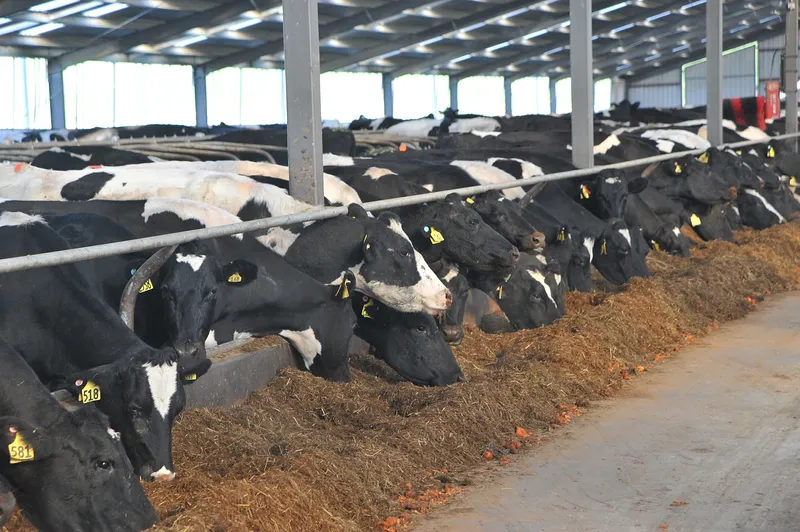
Factory farms are responsible for 99% of the US meat and milk production. Not sure what kind of a farm this is? You’re not far off if you have an image in your head of a cow being slammed together on a conveyor belt system.
Factory farms are also known as concentrated animal feeding operations (CAFO), and these farms are where animals are raised and fattened up within a small, confined space and in a short span of time.
Farmed animals produce milk, and large quantities of meat come from animals that are not nearly mature or able to free-range and graze natural rangeland.
Human consumption needs dominate the world’s requirements for meat and milk. The result is agony and torture for millions of cows exposed to harsh feedlots and slaughter.
Factory Farmed Cows
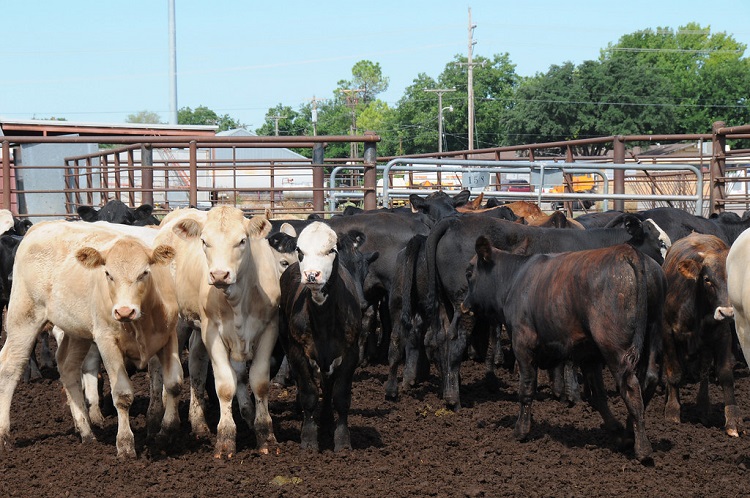
Factory-farmed cows live short lives on farms where they are kept in small pens with hard concrete floors and little natural grazing (if any). These cows are forced to have calves, which are then taken from their mothers so that the cows will produce milk for human consumption.
Cows may also be kept for meat, in which case, the cows are only given a year’s relative freedom on the open range to graze and grow before being sent to feedlots where the cattle are fed grain diets and injected with growth hormones to speed up their rate of growth and weight gain before being slaughtered.
Of course, a factory farm is only concerned with producing large volumes of meat and milk, and it seems people don’t care about the fate of the animals kept on these farms and in pens. Torture and painful death are what lies ahead for a cow raised in a factory farm or CAFO.
Cow’s Natural Lifestyle

What is life like for a cow as nature intended? If you’ve ever been on a small-scale farm, you may find life is very different for cows than on a factory farm. Cows have unique family units where they bond with their offspring and other cows. Cows even form nurseries to help each other look after young calves.
In a natural setting, cows graze open tracts of land known as rangeland. Grazing allows them to exercise and have freedom of movement.
Cows enjoy fresh air, company, and a diverse grazing field. By having a diversified diet, cows suffer fewer health problems such as ulcers than if they are fed high-protein unnatural diets.
Unlike factory farming cows, a natural or grass-fed cow produces better milk and meat, though the quantities are less. An unnatural diet leads to an increased production rate, which leads to poor living conditions, hormone-laced animal products, and the excessive use of antibiotics and growth hormones.
What Percentage of Cows Are Factory Farmed?
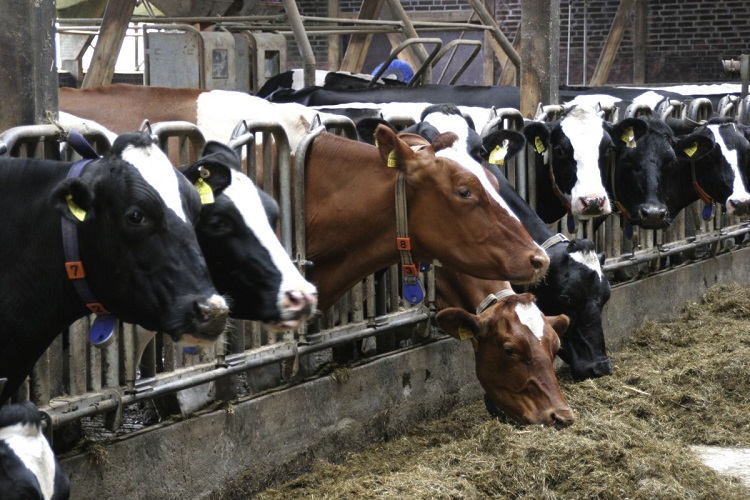
In the US, 99% of cows are factory farmed. Considering how many cows are in the world, this is a huge number.
Milk production depends on stable production volumes, resulting in an endless cycle of forced insemination, the birth of calves, and abusive treatment, such as removing calves from cows within hours of birth.
Meat cows have about a year on open rangeland to allow calves to graze and grow more naturally. After the calves are old enough to be force-fed protein-rich diets, they are moved to factory farms where cows are kept in small spaces on hard floors with little hay and even less medical care.
I was curious and concerned about the life of factory-farmed cattle and cows experience.
Factory Farming Cow Statistics
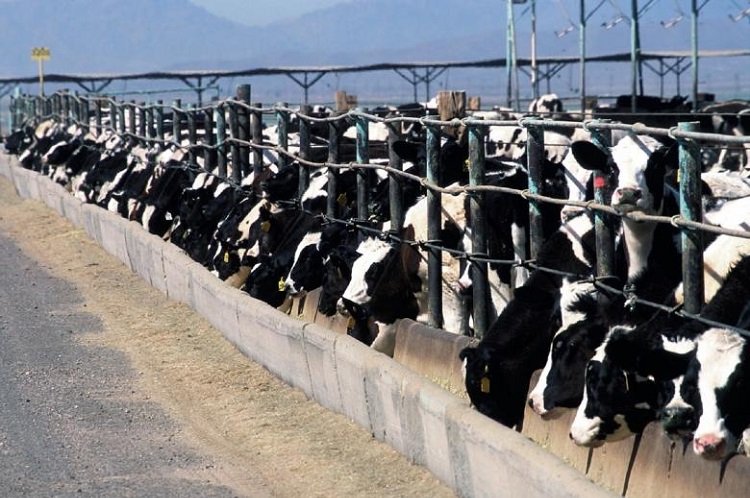
Here are a few statistics that reveal the true and traumatizing reality of the life of a factory-farmed cow.
Calves are born and removed from their mothers in a few hours, with bull calves being shipped off to a short life in a veal crate.
Female calves are also removed from their mothers and raised on artificial milk replacers until they are old enough. The cycle of milk production continues through the first insemination at about 14 months of age, when they start producing milk after their first pregnancy.
After about 4-6 years, a milk cow’s production drops, at which time she is slaughtered. In nature, a cow can continue producing milk up to the age of 20 if fed correctly and naturally, with some time resting between pregnancies.
Factory-farmed cattle are not much better off, and while they spend the first year grazing on open rangeland, they are also sent to factory farms where they are force-fed unhealthy diets that increase their bulk unnaturally. The young meat cows are kept in crowded pens in their own filth in unsanitary conditions on hard floors.
Male calves castrated without sedation, and some have their tails docked to ensure they don’t bite each other in frustration. Milking cows have their tails docked or cut off to allow easy access to their udders and to ensure an easier calving process.
How Are Cows Treated on Factory Farms?
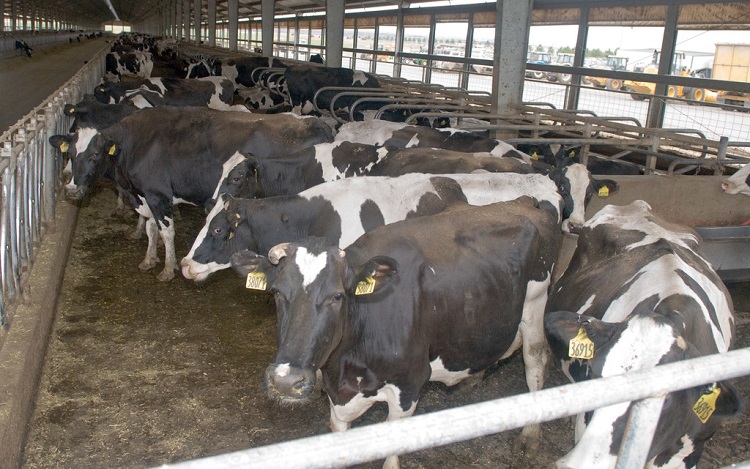
As I’ve already hinted, life for cows on factory farms is hard, cruel, and short. A cow can easily reach the age of 20, yet most don’t live longer than 4-6 years. In that short time, cows are exposed to inhumane treatment, abuse, and neglect of their basic instincts and rights as sentient beings.
Prevented from Grazing
Cows are supposed to free-range across large pieces of land. When cows can move, their bodies develop differently, they have better gut health, and they are happier and less stressed.
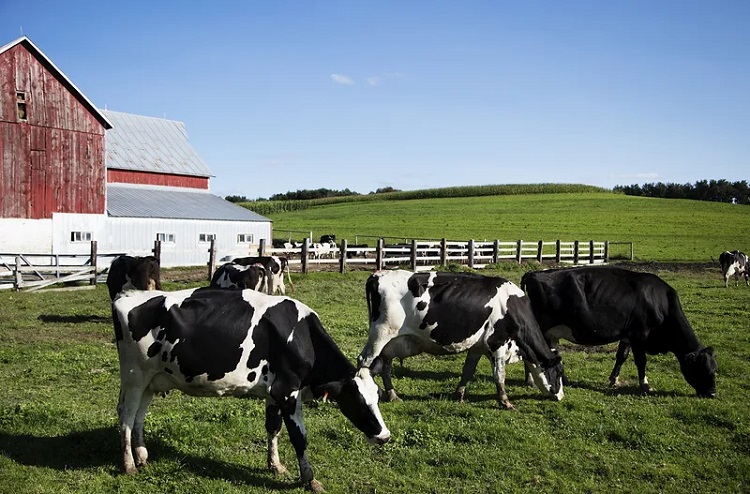
Grazing is a natural instinct for cattle, but cattle raised on factory farms are denied this basic instinct as they have to rely on artificial corn-enriched feed, poor quality hay and suffer growth hormone injections.
Prolonged Transportation and Traveling
When cows are destined for slaughter, they are transported across long distances in closed and cramped cattle trucks, where they often injure each other. I remember the first time I stopped at a traffic light next to a cattle truck.
The sight of the cows looking at me through the narrow bars was heartbreaking. If the smell coming off the truck was any indication of the sanitation that these animals were afforded, I feared their lives had been ones of pain and suffering.
These cattle trucks don’t stop to offload the cattle for rest periods, and while the 28-hour law is supposed to protect livestock and farm animals from abuse, this rarely happens.
Large companies can request an extension of the law up to 36 hours, which means a cow will have been standing in cramped conditions, often being stepped on and injured by other cows for almost two days.
Once the cattle reach the slaughterhouses, they are supposed to walk to their slaughter. Cattle that are downed and can’t get up are not suitable for human consumption, and these are required to be euthanized.
However, the reality is harsh, as these cows are forced to walk with cattle prodders and pushed with trucks when they can’t.
Forced Pregnancies
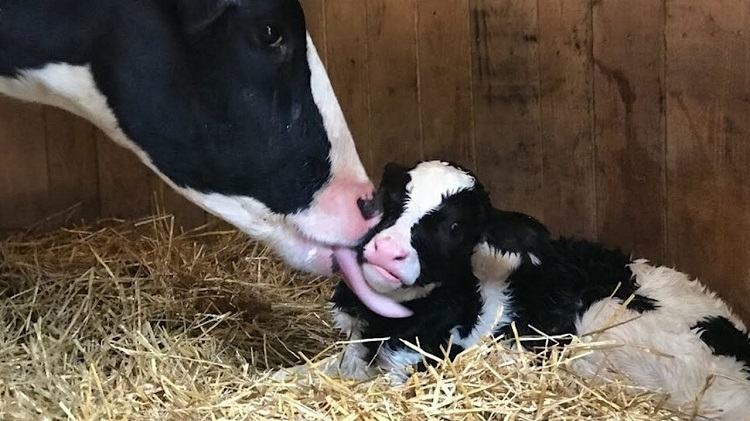
Dairy cows are forced into having multiple pregnancies during their short lives in factory farms. Artificially inseminated cows are impregnated within weeks of having given birth to calves.
The reality of such forced pregnancies is that cows suffer severe depletion of calcium, which leads to health problems and poor bone formation.
High-Calorie Diet
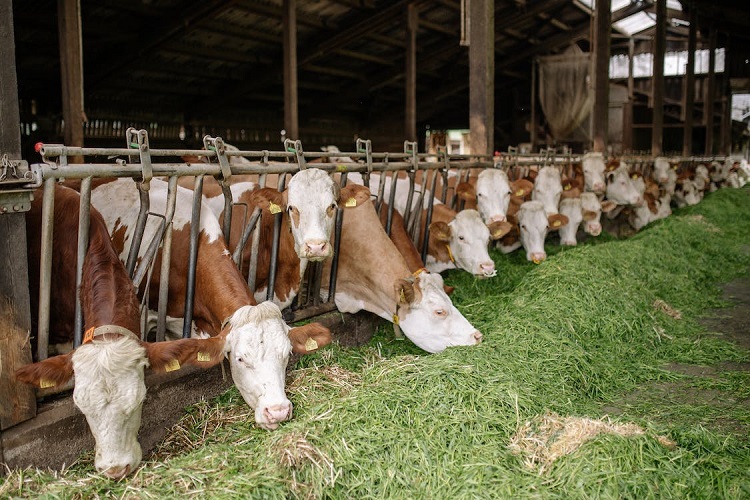
A high-calorie diet where cows are fed grain and not natural grazing hay results in fatter animals, but this results in stomach ulcers, diarrhea, and painful foot problems known as laminitis. A cow on a high-calorie diet will suffer separation of the tissue in their feet, making every movement painful.
What Happens to Cows Raised for Beef on a Factory Farm?
Cows raised for beef may have one glorious year of life on the range, but then they are stuffed in small pens with many other cows, with hardly enough room to move. Instead of feeding these cows sufficient amounts of hay, they are provided with enriched feeds that are high in calories to force the fattening of the young cows.
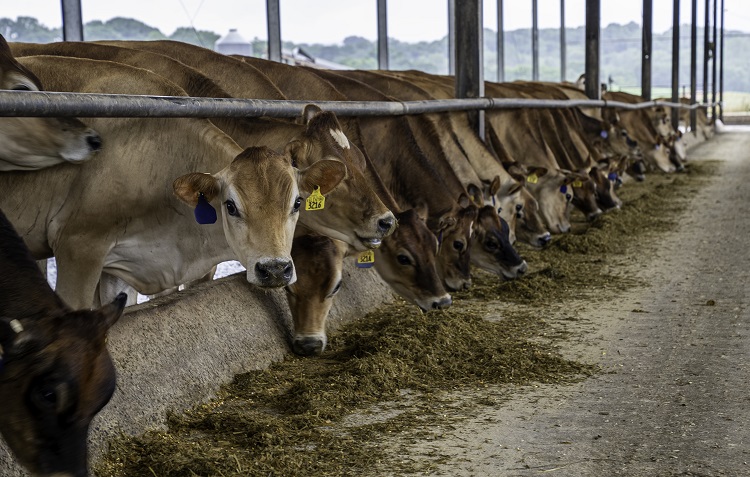
Once the cows have reached sufficient weight, usually at a very young age, hardly older than a year, they are shipped off for slaughter. While the cows are fattened up, they are forced through suffering and painful procedures such as being dehorned and having their tails cut off.
While meat is a protein source that millions depend on, I don’t (and never will) understand the need for such excessive cruelty and suffering when raising beef cattle.
How Are Cows Farmed for Dairy Products?
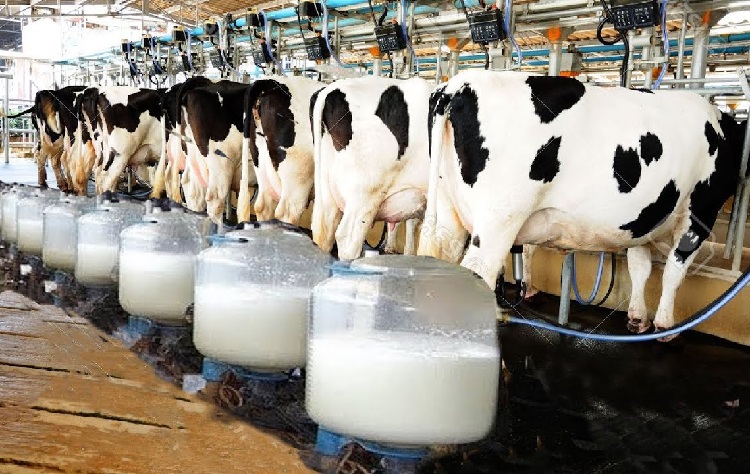
Milk or dairy cows live through an endless cycle of painful pregnancies, having their offspring taken from them. The female calves are offered hardly enough mother’s milk (which contains the vital colostrum they need to build immunity), and bull calves often have their throats cut.
Dairy products are obtained through horrific methods, and when a cow no longer provides enough milk to justify her feeding, she is simply sent off to be slaughtered.
Cheese is often manufactured using the rennet or special bacterial cultures inside a calf’s stomach. Calves are slaughtered to get rennet—your cheese sandwich may have cost a calf its life.
Impact of Beef Cattle Operations on the Environment
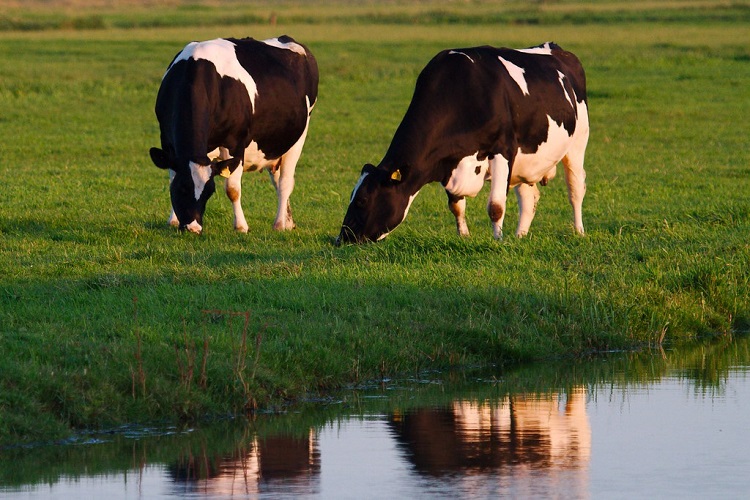
While life is terrible for cattle raised on factory farms, the impact of these operations on the local communities is also a huge concern.
Would you want to live next to a foul-smelling factory set-up where carcasses are removed daily as cattle die from poor management? Factory farms create massive pollution and spread diseases.
Emission of Greenhouse Gas
Cattle are known to be the top animal agriculture contributor to greenhouse gases. A single cow can belch several pounds of methane in a day—not to mention what comes out the other end when they produce manure.
Imagine that times several thousand cows at a feedlot or factory farm. No wonder it stinks so much when I drive past these farms!
Water Pollution
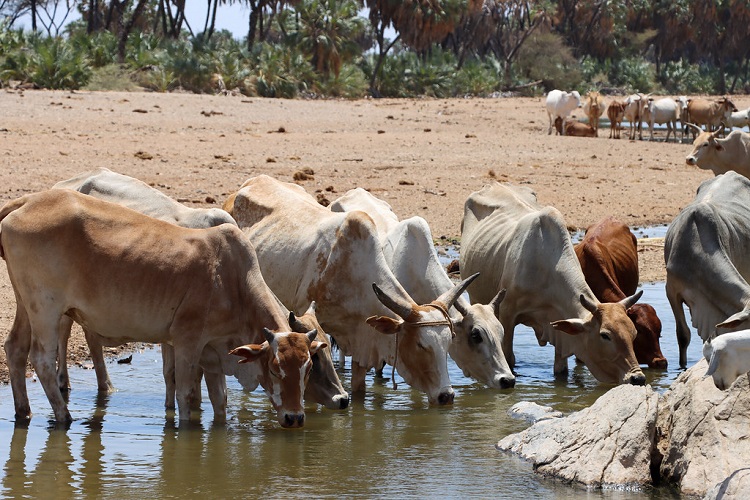
A single cow needs about 50 gallons of drinking water per day. If there are a thousand cows on a feedlot or at a factory farm (and the numbers are usually far higher), that means they require more than 50,000 gallons of water per day for drinking needs.
Of course, to try and maintain some level of sanitation and keep the health inspectors happy, these factory farms have concrete floors that have to be hosed daily to wash away manure, urine, and other waste material.
This requires thousands of gallons of water, which all ends up as runoff to local rivers and streams. If left to stand, the waste material will enter the groundwater table, negatively affecting local communities.
Deforestation
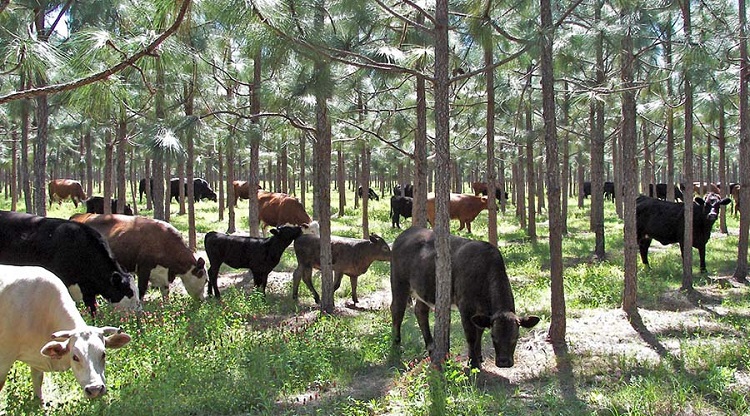
Another sad reality with mass-scale cattle farming is the loss of natural forests as large tracts of land are cleared of trees to make room for concentrated animal feeding operations.
Eventually, the loss of trees will lead to serious issues such as a loss of our vital oxygen production mechanisms, increased pollution, and the extreme loss of natural habitats for other animals.
How Cows Are Killed on Factory Farms
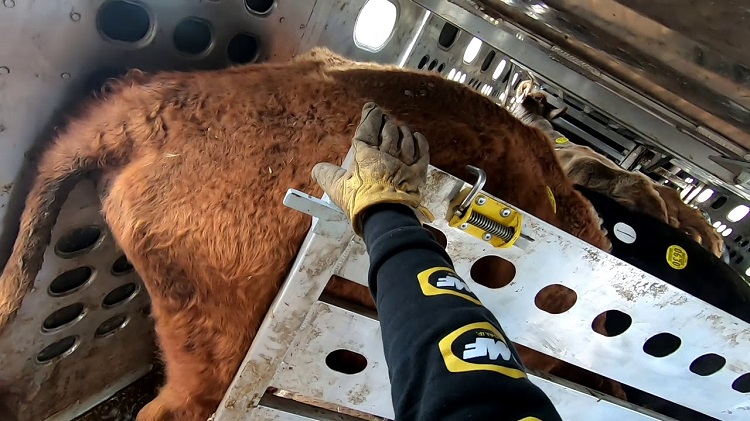
I couldn’t watch a cow being killed at a factory farm. It’s heartbreaking and like something from a horror movie. In an interview with a worker at a local slaughterhouse that adjoins a factory farm, the truth was revealed in harrowing and gory detail.
Cattle are forced down a narrow chute, with a gate at the front to temporarily stop the lead cows. Using a retractable bullet gun, the cattle are stunned with a single shot to the head. The cow is then strung up, hoisted off the ground, and their throat is cut. The other cows witness this terrible procedure.
Everything operates at speed, and the cows are dismembered when they haven’t fully bled out, some being conscious of the pain and agony of being cut into pieces. Some cows are even skinned alive as there’s no way to stop the process and kill a cow that’s still alive when the butchers start slicing the carcass.
You can understand the real dilemma after learning more about how many people are killed by cows annually.
The Sad Reality of Veal Calves

Young calves raised for veal are placed in veal crates with a small enclosure around them. The calf is not allowed room to move, which means they don’t build muscle, and the result is a calf being slaughtered at 4-6 weeks because it produces tender meat.
How Are Veal Calves Raised for Meat?
Veal calves don’t have any time to bond with their mothers, and they are shipped to facilities that raise these calves for a short time until they have enough soft meat on the bone to be slaughtered—usually in about a month.
Veal calves are kept in confinement and fed a protein-rich diet with milk replacers instead of their own mothers’ milk.
Calves Diet on Factory Farms
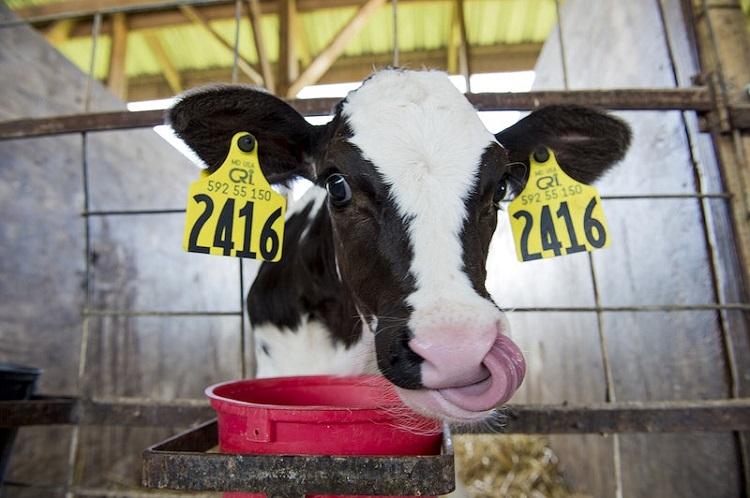
Factory farms or the veal industry have no interest in the long-term life of the calves and cattle they raise. These animals are fed a diet that causes permanent damage to their livers and organs.
I find it’s equivalent to sticking a few human babies into one crib and feeding them a sugar-rich diet to make them as fat as possible before slicing their throats. Could you do that? Why do it to calves at factory farms?
Killing of Calves on Factory Farms
Calves are killed on factory farms by having their throats cut. Hung upside down by metal hooks tied to their back legs, the calves bleed out before being processed for veal.
What Can You Do to Help Farmed Cattle?
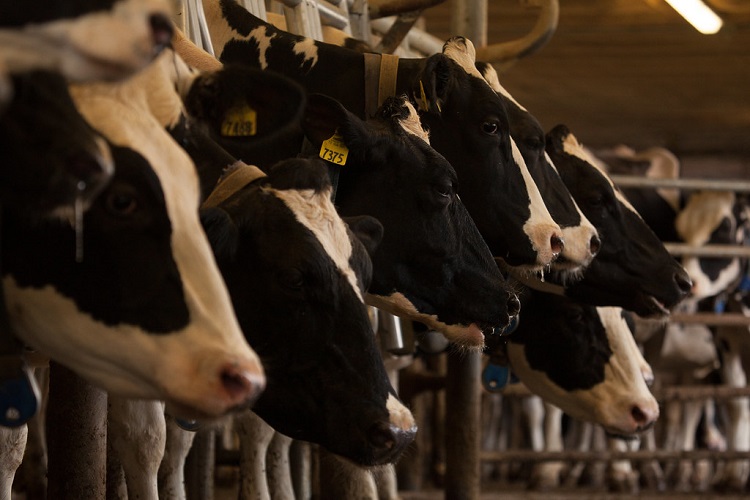
Cut back on your meat and milk consumption. Consider plant-based foods to replace your protein needs. Report any instances of animal welfare violations at factory farms in your area to ensure regular inspections are carried out by health services.
Write letters to your local congressman to ask for cruel factory farming to end. There is a better way to farm animals that doesn’t violate their natural instincts and cause such horror.
FAQ‘s
Do Cattle Raised for Beef Spend Their Entire Life on Open-Range Land?
Beef cattle enjoy about a year on open-range land where they can move and graze freely. Once big enough, cattle are moved to factory farms or CAFOs.
What Happens When the Cattle Leave the CAFOs?
They are shipped over long distances to slaughterhouses, where they are killed by painful and inhumane methods.
What Is Life Like for Cows on Dairy Farms?
Dairy cows are forced through multiple pregnancies, calves are taken from their mothers, and the milk is taken with milking machines that may damage the cows’ udders. The cows have no space or freedom.
What Is the Lifespan of Factory-Farmed Cows?
Dairy cows are slaughtered within 4-6 years, while factory-farmed beef cows are killed as soon as they are old enough and have enough meat.
Conclusion
I can’t help being upset when I drive past a factory farm or feedlot. Cows are gentle giants and social animals that want the same things we all desire—time with their children, freedom, fresh air, space, and safety.
The animal cruelty in factory farms needs to stop.


